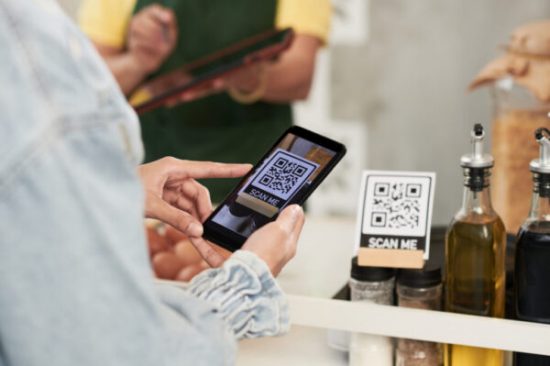In my household, I’m not known as the adventurous eater. I enjoy my regular meals and could easily eat the same thing repeatedly. However, one food trend recently caught my eye and piqued my curiosity—thanks, social media. It’s the Pickle Dr. Pepper from Sonic. I haven’t dared to try it yet, but it got me thinking about other unusual food combinations that, while seemingly odd, create something special together.
From my youth, I remember the novelty of pineapple on pizza. Another unexpected delight was mint jelly paired with lamb. Being from the South, chicken and waffles is a familiar favorite, and I personally enjoy dipping my Wendy’s fries in a Frosty. Like these culinary surprises, we’re now witnessing a fascinating convergence in the enterprise mobility world—one that involves rugged mobile devices and payment technologies, traditionally kept separate due to stringent Payment Card Industry (PCI) standards.

The Evolution of Payment and Mobile Device Integration
Historically, payment devices—those used to swipe credit cards, insert PINs, or facilitate tap-to-pay—were kept distinct from mobile devices that ran software to handle transactions. This separation ensured a layer of security, preventing potential hackers from accessing and manipulating transaction data. However, with the advent of updated PCI-PIN Transaction Security (PTS) and Point of Interaction (POI) standards, this is changing.
We’re now seeing a trend where companies, some of which haven’t traditionally built mobile devices, are stepping into this space. Payment companies and digital display manufacturers are releasing mobile devices tailored for frontline workers in retail. These devices integrate payment functionalities, eliminating the need for secondary payment devices or traditional pin terminals, thus streamlining the checkout process.
Payment companies and digital display manufacturers are releasing mobile devices tailored for frontline workers in retail
The Drive Towards Android: A Paradigm Shift
One significant factor driving this convergence is the migration from Linux to Android in next-generation payment terminals. Android offers numerous benefits, including a vast user base—billions of devices worldwide—robust support from third-party libraries, and a wealth of use cases. Devices certified by Google Mobile Services (GMS) benefit from enhanced security features, virus protection, and streamlined device management, thanks to Android Enterprise.
Pioneering Companies Leading the Charge
Among the companies leading this innovation is Elo, traditionally known for digital displays. Elo has ventured into building mobile devices, creating a sleek device that integrates payments without compromising the device’s form factor. Their approach makes these devices appealing to retailers and end-users needing efficient payment options on the go.
PAX and Ingenico are other notable players. Ingenico, a stalwart in the point-of-sale industry, brings extensive experience and credibility to this market. They leverage their deep understanding of payment processing to offer mobile devices that seamlessly integrate payment functionalities, providing retailers with robust, reliable solutions.
Innovative Use Cases and Efficiency Gains
The integration of payment capabilities into rugged mobile devices unlocks numerous use cases, enhancing operational efficiency. For instance, BlueFletch Enterprise offers a feature where store associates can be paged using a QR code system. Customers scan the code, request assistance or checkout, and receive real-time updates on the associate’s location and ETA—akin to an Uber experience. This allows associates to process transactions directly in the aisle, reducing wait times and improving customer satisfaction.
Imagine the convenience of scanning a QR code at a kiosk, signaling readiness to checkout, and seeing an associate’s profile and location on a map as they approach. The associate can then handle the transaction, print receipts using a mobile printer, and the customer can leave the store without waiting in line. This creates a seamless, personalized shopping experience that reduces anxiety and enhances customer satisfaction.

Implications for BlueFletch Enterprise
For BlueFletch Enterprise, this convergence represents a shift towards providing tailored deployment options that fit specific roles within a retail environment. Instead of using the same device across all operations, retailers can now choose devices optimized for particular tasks. For instance, back-office associates might use rugged devices focused on task management, while front-of-store associates use devices designed for efficient checkout processes.
This flexibility improves the associate experience and supports innovative, customer-facing features. The transition from development to production for PCI-compliant devices can be challenging, but the benefits in terms of security, efficiency, and user experience are substantial. Once deployed, these devices simplify the payment process, reduce the risk of lost or stolen devices, and eliminate connectivity issues associated with separate payment terminals.
The transition from development to production for PCI-compliant devices can be challenging, but the benefits in terms of security, efficiency, and user experience are substantial
Future Prospects and Market Disruption
As we observe these developments, it’s worth considering whether these new devices and companies will disrupt the market share of established players like Zebra, Honeywell, and Samsung. Will these innovations stand the test of time, or are they simply a trend? Time will reveal their impact, but the potential for significant market shifts is undeniable.
For retailers seeking to combine the convenience of integrated payment processing with the rugged durability needed for frontline operations, these new devices offer compelling advantages. Paired with BlueFletch Enterprise, the potential to unlock a flexible, OEM-agnostic experience is immense. This convergence promises a seamless, efficient, and enjoyable experience for both employees and customers alike.
Retailers and those supporting retail operations should consider these devices’ benefits and explore how solutions like BlueFletch Enterprise can enhance their deployment. From single sign-on to chat functionalities, the tools we offer can simplify mixed mobile device deployments, improving the end-user experience and streamlining internal support processes.
As the landscape of enterprise mobility continues to evolve, staying ahead of these trends and leveraging innovative solutions will be crucial for retailers looking to enhance efficiency, security, and customer satisfaction.
